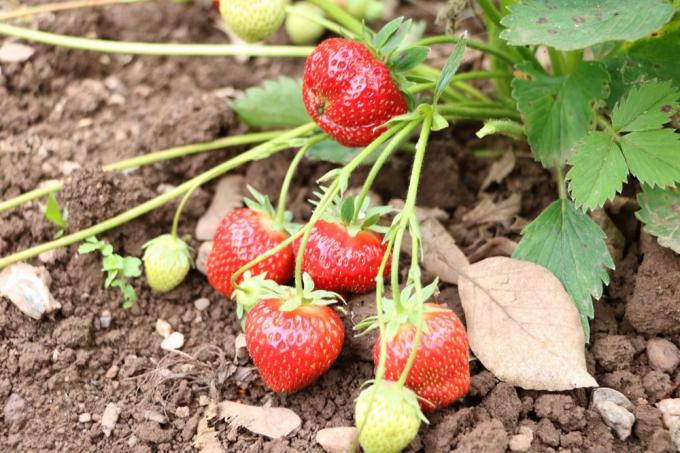
table of contents
- Brown leaves on strawberry plants
- Red spot disease
- White spot disease
- Combination of the disease
- Prevention of brown spots
- Treat brown leaf spots effectively
Who doesn't love her in summer? Red, juicy, sweet strawberries, preferably from the garden at home. Everything is wonderful and a reason to be happy, as long as there are no stains on the leaves, because they indicate a disease.
Brown leaves on strawberry plants
Brown leaves are an indication that it is about the formation of a Mushroom species has come. It is either the white spot disease or the red spot disease. Both pathogens often appear together and differ in how they spread. The treatment is the same for both pathogens and the strawberries can usually be saved.
Red spot disease
Red spot disease is often the reason when brown leaves form. This disease usually spreads during the harvest season. Appearance are purple to brownish spots on the leaves, which can be about four millimeters in size. Most of the diseased parts of the strawberry plant are discolored yellow.
- Development of purple spots
- Spot size around 4 mm
- The leaves turn brownish-yellow
White spot disease
As the name suggests, the white spot is recognizable and distinguishable from the red spot because the color of the spots is lighter. These are circular, light spots that have a reddish border. The leaf tissue in the middle of the spot dies partially or completely and the leaves first turn yellow, then brown and finally fall off.
- Development of white spots with a red border
- Spot size is getting bigger and bigger
- Tissue of the leaf dies
Combination of the disease
If the strawberry is badly infested, the spots from both diseases converge. The assimilation area of the leaf is thereby reduced and the plant is weakened. Sometimes not only the foliage but also the fruit is affected, and even sepals can show symptoms of the disease.
Even the cold winter does not change the infestation, because the fungal spores can overwinter. They remain on the infected plants and are then transferred to other specimens through raindrops, wind movements or direct contact.
Prevention of brown spots
Pathogens causing red and white spots need a warm, humid environment so that they are able to germinate. Preventive measure number one is therefore dryleaves. When it rains it is important that the plants can dry off quickly. The distance between the plants is crucial here. There should be a minimum distance of 30 cm between two strawberry plants. 60 cm is mandatory between individual rows.
With one edition straw you can ensure that rain does not splash up and contaminate the plants. When self-watering, you should make sure that you water only in the morning and that the leaves remain dry.
- Always water strawberry plants in the morning
- ensure that the leaves are dry
- Note the planting distance
Treat brown leaf spots effectively
Once the foliage has changed color, it is important to treat it properly. You can join us in advance Horsetail broth make your strawberries more resilient. You can also choose varieties that are less prone to disease.
If you discover an affected plant, it is important that you carefully remove any infected leaves. Bring them away on the compost and never leave them in the bed. A copper-based fungicide is also suitable as a treatment. These are approved for organic cultivation and do not impair their consumption.






